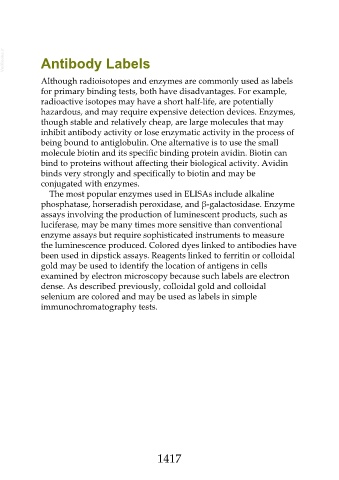Page 1417 - Veterinary Immunology, 10th Edition
P. 1417
VetBooks.ir Antibody Labels
Although radioisotopes and enzymes are commonly used as labels
for primary binding tests, both have disadvantages. For example,
radioactive isotopes may have a short half-life, are potentially
hazardous, and may require expensive detection devices. Enzymes,
though stable and relatively cheap, are large molecules that may
inhibit antibody activity or lose enzymatic activity in the process of
being bound to antiglobulin. One alternative is to use the small
molecule biotin and its specific binding protein avidin. Biotin can
bind to proteins without affecting their biological activity. Avidin
binds very strongly and specifically to biotin and may be
conjugated with enzymes.
The most popular enzymes used in ELISAs include alkaline
phosphatase, horseradish peroxidase, and β-galactosidase. Enzyme
assays involving the production of luminescent products, such as
luciferase, may be many times more sensitive than conventional
enzyme assays but require sophisticated instruments to measure
the luminescence produced. Colored dyes linked to antibodies have
been used in dipstick assays. Reagents linked to ferritin or colloidal
gold may be used to identify the location of antigens in cells
examined by electron microscopy because such labels are electron
dense. As described previously, colloidal gold and colloidal
selenium are colored and may be used as labels in simple
immunochromatography tests.
1417

